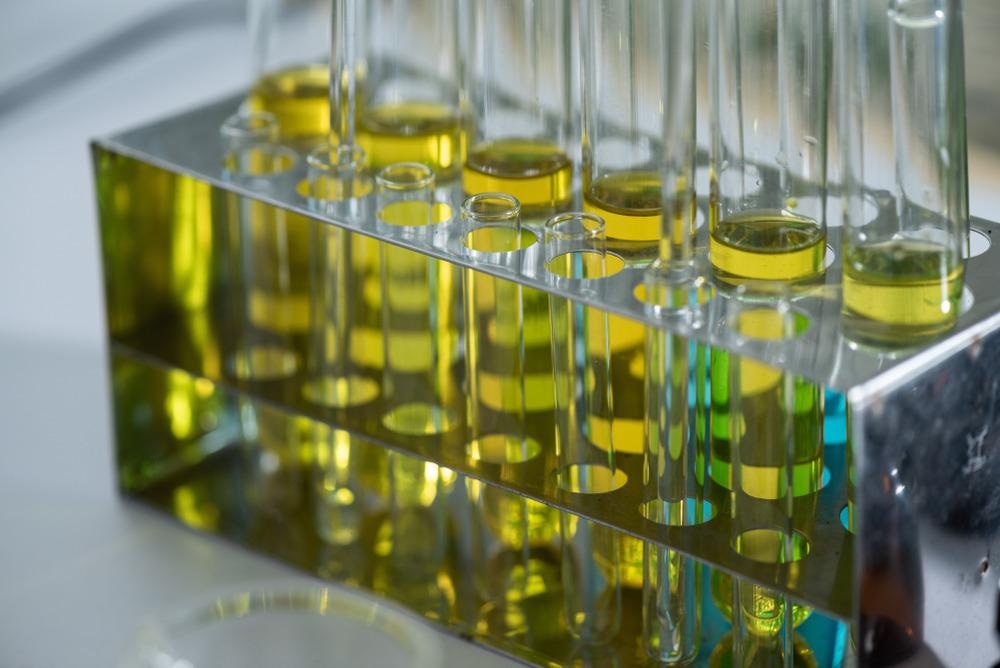This article considers the use of absorption atomic spectroscopy (AAS) analysis applied to the study of biofuels, and recent research and developments in this area.

Image Credit: Chokniti Khongchum/Shutterstock.com
Fossil Fuel, Biofuels, and Spectroscopic Techniques
Fossil fuels are widely used in automobiles, industry, and power plants, but due to excessive use they are depleting at a rapid rate. This has prompted a search for renewable, sustainable, and environmentally friendly alternative energy sources.
Biofuel is an energy source made from biomass feedstocks such as agriculture products, algae, or animal fat. Scientists and researchers consider biofuel as a potential alternative to fossil fuels for renewable energy. Spectroscopic techniques are essential scientific analysis methods used for material identification and detection. Industries and researchers use it for elemental analysis of biodiesel, bioethanol, biomass, and biofuel.
Spectroscopy and AAS Analysis
Spectroscopic science studies the interaction of various radiations with matter, and spectroscopic measurements are essential for understanding the characteristics of different materials.
Absorption Atomic Spectroscopy (AAS) is one of the first commercially developed elemental analysis techniques for industrial applications. AAS was released as an analytical technique in the 1960s, after being developed in 1952. Since then, the technique has been widely used due to its high reliability and simplicity in several applications.
AAS is a technique used to determine the quantity and type of element present in a material. Initially, the light of a specific wavelength is projected on the sample, and an accumulator collects the reflected light. The type and amount of light absorbed by the accumulator help the elemental analysis of the sample.
AAS also uses atomization and emission techniques for the analysis of biofuels during which a controlled flame is used for AAS analysis. The flame causes the evaporation and desolvation of biomolecules of biofuels into atoms. Additionally, electrothermal atomization is another standard AAS method used to analyze biofuels.
AAS Analysis of Biofuels
In biofuels such as bioethanol and biodiesel, the presence of trace elements can cause serious consequences. Primary trace elements in biodiesel are sodium, potassium, calcium, magnesium, sulfur, phosphorus, and copper.
Trace elements are found in biodiesel because they are mainly derived from organic sources such as vegetable oils. The organic sources gather trace elements from the soil and water sources. Further, biofuels also gather trace elements during the synthesis and extraction procedures performed during production.
The limit of trace elements in biodiesel has been fixed by the American Standard of Testing and Measurement, and commercial biodiesel manufacturers must follow these standards during biofuel production. It is significant to quantify trace elements in biofuels using a precise and accurate method. Further, as the demand for renewable fuel grows globally, the importance of such analysis is also proliferating.
AAS analysis is the primary spectroscopic technique used for determining trace elements in biofuels. It is based on the principle of electromagnetic radiation emission, during which the movement of electrons from the ground state to the excited state is estimated for the identification of trace elements. Compared to other spectroscopic methods, AAS is more precise and reliable and is commonly used for the elemental analysis of biofuels.
Recent Research
Several researchers have been trying to improve AAS analysis to accurately determine trace elements in biofuels and reduce the technical challenges faced during the evaluation. The studies conducted by them recommend diluting the biodiesel with an organic solvent to reduce the errors in AAS analysis. Additionally, they also recommend using surfactants to pre-emulsify the biodiesel sample to improve AAS analysis' reproducibility. Furthermore, in some cases, extracting analytes from a sample yields satisfactory results during the AAS analysis.
In a recent study published in the journal Spectrochimica Acta Part B: Atomic Spectroscopy, researchers from Spain conducted a multi-elemental analysis of biofuels. They recommended a list of biofuels in which the AAS analysis yields the most appropriate results.
In another study published in the Microchemical Journal, researchers from Brazil demonstrated a modified method to identify sodium, calcium, potassium, and magnesium elements in biodiesel using the AAS method. The modified method improves the reliability and speed of the AAS analysis and can be employed for industrial applications easily.
Conclusions
To summarize, the different types of biofuels are a potential alternative to fossil fuels, and their application has greatly increased in the last few decades. Hence, there is a growing need for reliable and rapid biofuel analysis methods in industry. AAS analysis is primarily used to identify trace elements in biofuels, yet significant research is required to improve the method's quality, speed, and reliability for industrial application.
Fuel production that enables us to reduce emissions is critical for our present struggle against climate change.
References and Further Reading
Fernanda Henrique Lyra, Maria Tereza Weitzel Dias Carneiro, Geisamanda Pedrini Brandão, Helen Moura Pessoa, Eustáquio Vinícius de Castro, Determination of Na, K, Ca and Mg in biodiesel samples by flame atomic absorption spectrometry (F AAS) using microemulsion as sample preparation, Microchemical Journal, Volume 96, Issue 1, 2010, Pages 180-185, ISSN 0026-265X, https://doi.org/10.1016/j.microc.2010.03.005.
Santiago Martínez, Raquel Sánchez, Johan Lefevre, José-Luis Todolí, Multi-elemental analysis of oil renewable fuel feedstock, Spectrochimica Acta Part B: Atomic Spectroscopy, Volume 189, 2022, 106356, ISSN 0584-8547, https://doi.org/10.1016/j.sab.2021.106356
Da Silva, João Cajaiba, et al. "Advances in the application of spectroscopic techniques in the biofuel area over the last few decades." Frontiers in Bioenergy and Biofuels (2017): 25-58.
Disclaimer: The views expressed here are those of the author expressed in their private capacity and do not necessarily represent the views of AZoM.com Limited T/A AZoNetwork the owner and operator of this website. This disclaimer forms part of the Terms and conditions of use of this website.